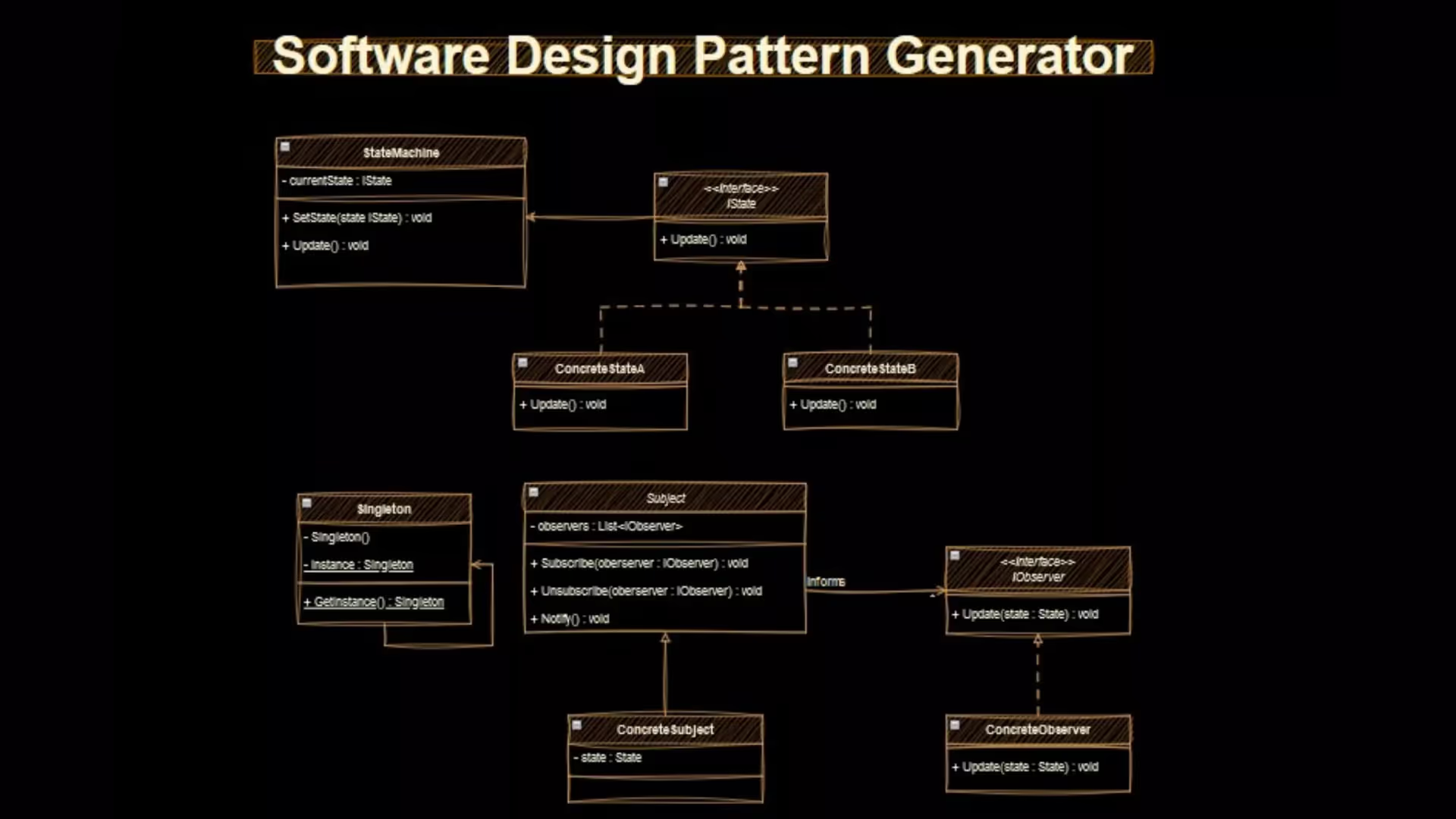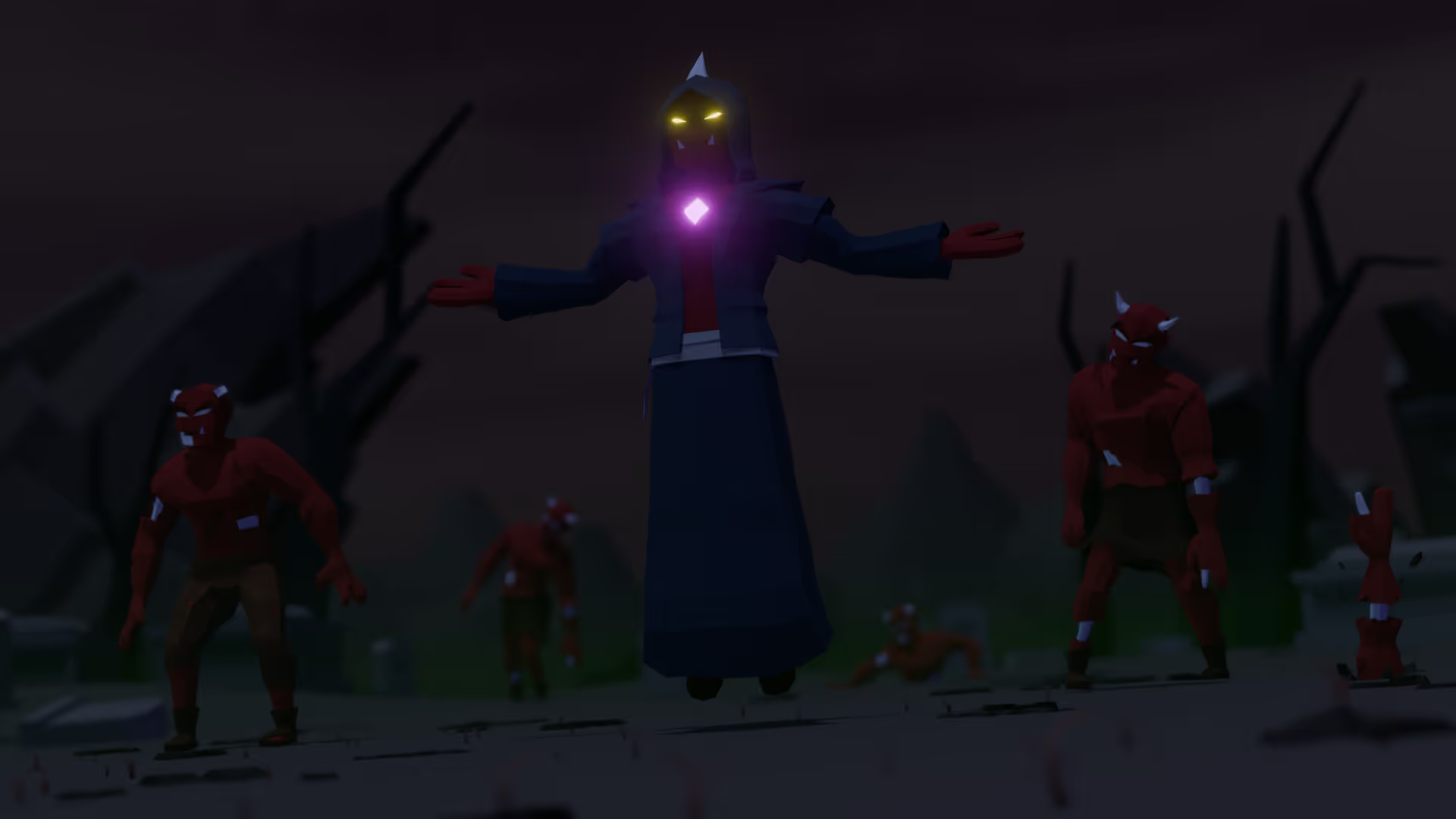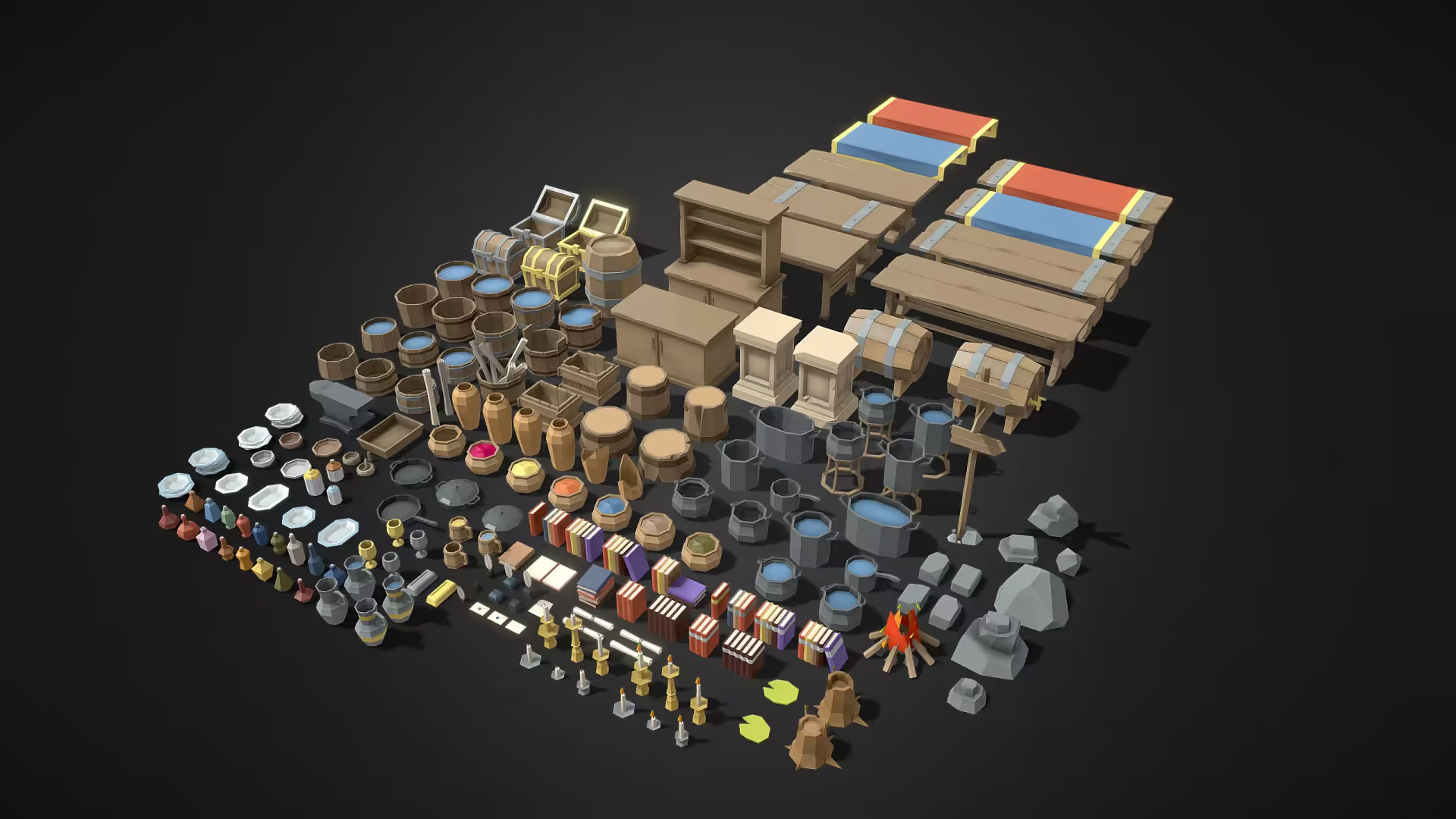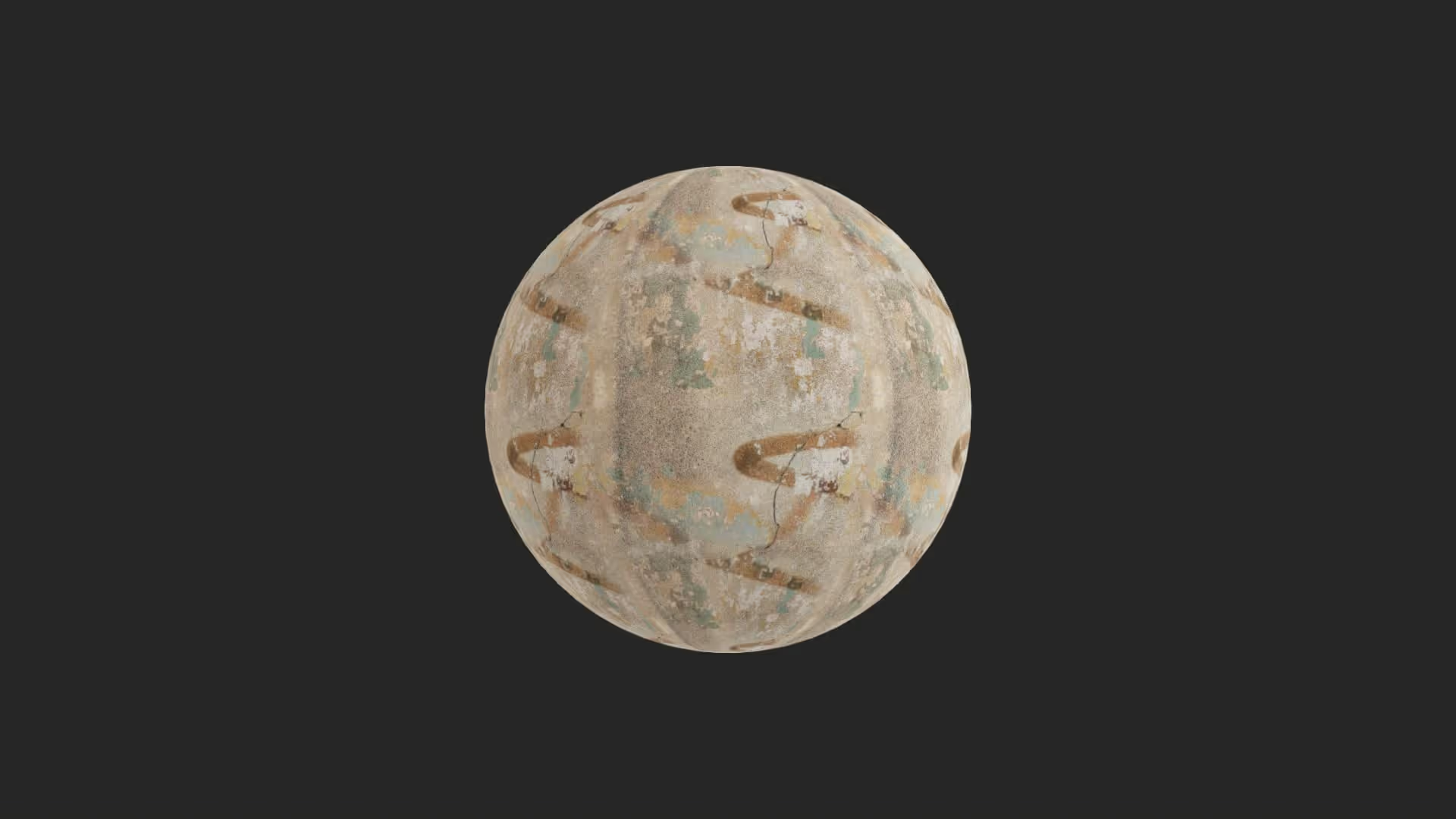Optimize Unity's Performance with Object Pooling
In the world of game development, performance optimization is a critical aspect to ensure smooth and seamless gameplay. One common technique used by game developers to optimize performance is object pooling. In this article, we will explore the concept of Unity object pooling, its definition, importance, benefits, implementation, best practices, examples, challenges, solutions, and comparison with other optimization techniques.
Download our free Object Pooling system now ->
Introduction
As games become more complex with advanced graphics and intricate gameplay mechanics, managing game objects efficiently becomes crucial. Unity object pooling is a technique that allows game developers to reuse and recycle objects instead of creating and destroying them repeatedly, which can cause performance issues. By using object pooling, developers can significantly reduce the overhead of object creation and destruction, thereby improving the performance and responsiveness of their games.
Definition
Unity object pooling is a technique used in game development where a pool of pre-instantiated objects is created during runtime, which can be reused multiple times instead of creating new objects from scratch. These pre-allocated objects are stored in a pool, and they can be activated or deactivated as needed, eliminating the need to constantly create and destroy objects during gameplay.
When a game is running, it often requires the creation and destruction of numerous game objects, such as bullets, enemies, particles, and effects. Creating and destroying objects dynamically during runtime can be resource-intensive, as it involves memory allocation and deallocation, which can lead to performance issues such as stuttering, frame drops, and lag. This is especially problematic in performance-critical scenarios, such as mobile games or virtual reality experiences, where maintaining smooth and responsive gameplay is crucial.
To mitigate these performance issues, Unity object pooling provides a solution by creating a pool of objects during runtime, which are pre-instantiated and stored in memory. These objects can be quickly activated or deactivated as needed, without the overhead of creating and destroying objects from scratch. This allows for efficient reuse of objects, reducing the impact on system resources and improving overall game performance.
Object pooling can be implemented in various ways, depending on the specific requirements of the game. For example, objects can be pooled at the start of the game or dynamically as needed during gameplay. Objects can also be pooled based on specific criteria, such as object type, size, or functionality. Object pooling can be used for a wide range of game objects, including characters, projectiles, particles, effects, and more.
By implementing Unity object pooling in a game, developers can achieve significant performance optimizations, resulting in smoother gameplay, reduced stuttering, improved frame rates, and enhanced overall player experience. It is a widely used technique in the game development community to optimize performance and responsiveness, especially in resource-constrained environments.
In conclusion, Unity object pooling is a technique that involves creating a pool of pre-instantiated objects during runtime, which can be reused multiple times instead of constantly creating and destroying objects. This approach can significantly optimize game performance by reducing the overhead of memory allocation and deallocation during gameplay. Object pooling is a valuable tool for game developers to improve performance, achieve smoother gameplay, and enhance the overall player experience.
Importance
Object pooling is a crucial optimization technique in game development that helps reduce the overhead of object creation and destruction, which can significantly impact game performance. When objects are created and destroyed frequently during gameplay, it can cause performance issues such as frame rate drops, stuttering, and increased memory usage, especially in resource-constrained environments such as mobile devices or virtual reality experiences.
Object pooling mitigates these performance issues by reusing objects from a pre-allocated pool, rather than creating and destroying objects from scratch. When an object is no longer needed, it is returned to the pool for future reuse, rather than being destroyed, and when a new object is required, it is retrieved from the pool, avoiding the need for costly object instantiation.
By reusing objects from the pool, object pooling reduces the CPU and memory overhead associated with object creation and destruction. Creating new objects during gameplay involves memory allocation, deallocation, and garbage collection, which can cause performance spikes and impact the smoothness and responsiveness of gameplay. Object pooling eliminates or minimizes these performance spikes by reusing objects from the pool, resulting in smoother and more responsive gameplay.
In addition to reducing CPU and memory overhead, object pooling also helps optimize performance by reducing the time spent on object creation and destruction. Instantiating new objects and destroying them can be time-consuming, especially when done frequently during gameplay. Object pooling circumvents this overhead by reusing objects from the pool, which can lead to faster and more efficient gameplay.
Object pooling is a versatile technique that can be implemented in various ways depending on the requirements of the game. It can be used for a wide range of game objects, including characters, projectiles, particles, effects, and more. Object pooling can be applied at the start of the game or dynamically during gameplay, and objects can be pooled based on specific criteria such as object type, size, or functionality.
In conclusion, object pooling is a critical optimization technique in game development that helps reduce the overhead of object creation and destruction, which can significantly impact game performance. By reusing objects from a pre-allocated pool, object pooling minimizes CPU and memory overhead, reduces performance spikes, and optimizes the time spent on object creation and destruction. Object pooling is a valuable tool for game developers to enhance performance, achieve smoother gameplay, and improve overall player experience.
Benefits
The use of Unity object pooling provides several benefits to game developers.
Improved performance
Object pooling helps reduce the overhead of object creation and destruction, resulting in improved performance and smoother gameplay. Creating and destroying objects frequently during gameplay can cause performance issues such as frame rate drops and stuttering. By reusing objects from a pre-allocated pool, object pooling minimizes the CPU and memory overhead associated with object creation and destruction, leading to improved performance and a smoother gameplay experience for players.
Reduced memory usage
Reusing objects from the pool reduces the memory footprint of the game. When objects are constantly created and destroyed, it can lead to increased memory usage as new objects are allocated and deallocated. Object pooling eliminates the need to create and destroy objects frequently, as objects are reused from the pool instead. This reduces the overall memory usage of the game, resulting in a more optimized memory management approach.
Faster load times
Using object pooling during game startup can help reduce load times. Pre-instantiated objects are readily available in the pool, eliminating the need to instantiate new objects during gameplay, which can take time. By having objects already instantiated in the pool, the game can load faster, resulting in improved player experience and reduced waiting times.
Easier memory management
Object pooling simplifies memory management by keeping track of object reuse and deactivation. When objects are returned to the pool after use, they are deactivated and stored for future reuse, eliminating the need for manual memory management. This helps prevent memory leaks, as objects are properly managed within the pool, reducing the chances of memory-related issues in the game.
Scalability
Object pooling allows for dynamic scaling of game objects. Objects can be added or removed from the pool based on the game’s needs. This flexibility allows for efficient management of game objects, especially in scenarios where the number of objects needs to change dynamically, such as in procedural generation, level design, or in-game events. Object pooling provides scalability, making it a useful technique for managing game object instances effectively.
Maximizing Game Performance and Memory Management with Unity Object Pooling
Unity object pooling provides several benefits to game developers, including improved performance, reduced memory usage, faster load times, easier memory management, and scalability. Object pooling is a powerful optimization technique that can enhance game performance, memory management, and overall player experience, making it a valuable tool for game developers using Unity game engine.
Implementation
Implementing Unity object pooling involves several steps:
- Create a pool: Create a pool of objects during runtime, either at game startup or as needed during gameplay.
- Instantiate objects: Instantiate a predefined number of objects from the pool and store them in the pool as inactive.
- Activate and deactivate objects: Activate and deactivate objects from the pool as needed during gameplay, based on the game’s logic and requirements.
- Reuse objects: Reuse objects from the pool instead of creating new objects during gameplay, and return objects to the pool when they are no longer needed.
Best Practices
When implementing Unity object pooling, it is essential to follow best practices to ensure optimal performance:
- Choose the right pool size: The size of the object pool should be carefully chosen to avoid unnecessary memory usage. Too small a pool may result in objects being constantly created and destroyed, while too large a pool may lead to wasted memory. It’s important to strike a balance and determine the optimal pool size based on the game’s requirements and performance testing.
- Pool objects wisely: Not all objects need to be pooled. It’s important to identify objects that are frequently created and destroyed during gameplay and pool only those objects to optimize performance. Objects that are rarely used or have a long lifespan may not benefit from object pooling.
- Use object pooling sparingly: Object pooling is not a one-size-fits-all solution and should be used judiciously. Overusing object pooling can lead to unnecessary overhead and complexity in code. It’s important to analyze and profile the game’s performance to determine where object pooling will provide the most significant benefits.
- Handle object activation and deactivation efficiently: Activating and deactivating objects from the pool should be done efficiently to minimize performance impact. Use object pooling libraries or techniques that optimize the activation and deactivation process, such as pooling objects in batches, to reduce CPU overhead.
- Consider memory management: While object pooling simplifies memory management, it’s still important to handle memory properly. Avoid memory leaks by returning objects to the pool when they are no longer needed, and ensure that objects are properly cleaned up before being deactivated and returned to the pool.
Examples
Let’s take a look at a couple of examples of how Unity object pooling can be implemented in real-world scenarios:
Example 1: Bullet Pooling
In a shooting game, bullets are a key element that are constantly created and destroyed as the player fires shots. However, creating and destroying bullet objects repeatedly during gameplay can cause performance issues such as frame rate drops and stuttering. This is where object pooling comes in handy.
With object pooling, a pool of pre-instantiated bullet objects can be created during runtime. When the player fires a bullet, instead of creating a new bullet object from scratch, a deactivated bullet from the pool can be activated and reused. This eliminates the overhead of creating and destroying bullet objects multiple times, resulting in improved performance and smoother gameplay.
The benefits of using bullet pooling in a shooting game are significant. It helps reduce the CPU and memory overhead, as well as the need for frequent object creation and destruction. This leads to smoother gameplay with fewer performance issues. Additionally, it can also help with memory management, as the memory footprint of the game is reduced by reusing bullets from the pool instead of constantly creating and destroying them.
By utilizing object pooling for bullets in a shooting game, developers can optimize the game performance, reduce memory usage, and create a more enjoyable and responsive gameplay experience for players. Object pooling provides an efficient solution for managing game objects that are frequently created and destroyed, such as bullets, and is a powerful tool for game developers to improve performance and gameplay in their projects.
Example 2: Enemy Pooling
In many games, encounters with multiple enemies are common, and enemy objects are constantly created and destroyed as the player progresses. However, creating and destroying enemy objects frequently during gameplay can negatively impact performance and responsiveness. This is where object pooling can be utilized to optimize game performance.
With enemy pooling, a pool of pre-instantiated enemy objects can be created at the start of the game or level. When the player encounters an enemy, instead of creating a new enemy object, a deactivated enemy from the pool can be activated and reused. This eliminates the overhead of creating and destroying enemy objects multiple times, resulting in improved performance and responsiveness.
The benefits of using enemy pooling in a game with multiple enemies are significant. It helps reduce the CPU and memory overhead associated with frequent object creation and destruction, resulting in better performance and responsiveness. Additionally, it can also help with memory management, as the memory footprint of the game is reduced by reusing enemy objects from the pool instead of constantly creating and destroying them.
By utilizing object pooling for enemies in a game, developers can optimize game performance, reduce memory usage, and create a more enjoyable and responsive gameplay experience for players. Object pooling is a valuable technique for managing frequently created and destroyed game objects, such as enemies, and can greatly enhance game performance and responsiveness.
Challenges in Implementing Unity Object Pooling: Overcoming Object Variability, Synchronization, Dynamic Scaling, and Overhead
Implementing Unity object pooling can be a powerful optimization technique, but it also comes with its own set of challenges. Some common challenges in implementing object pooling in Unity games include the following.
Object Variability
Objects in a game may have varying properties or states, which can make it challenging to reuse objects from a pool without losing specific attributes. For example, different bullets may have different properties, such as damage or speed, that need to be preserved when reused from a pool. One solution to this challenge is to use a flexible object pooling approach that allows for dynamic adjustments of object properties based on the game’s logic. This may involve storing additional data or metadata alongside pooled objects to retain their specific attributes.
Synchronization
In multiplayer games, object pooling can become more challenging due to the need for synchronization among different clients. Each client may have its own pool of objects, and ensuring consistency among the different pools can be complex. Proper synchronization techniques, such as networked object pooling, can be implemented to ensure that all clients have a consistent view of the pooled objects. This may involve sending updates about object activations, deactivations, and properties across the network to keep all clients in sync.
Dynamic Scaling
Managing object pooling for dynamically changing game environments, such as procedural generation or level streaming, can also pose challenges. For example, the number of objects needed in a pool may need to be adjusted based on the changing gameplay requirements. One solution to this challenge is to use dynamic pooling techniques that allow for adding or removing objects from the pool as needed based on the game’s requirements. This may involve dynamically resizing the pool or creating and destroying pools on the fly to adapt to changing game conditions.
Overhead of Pooling
While object pooling can optimize performance by reducing object creation and destruction overhead, it can also come with its own overheads. For example, the memory used by the pool itself, or the management of pool objects, can consume additional resources. Proper memory management and optimization techniques, such as using object pooling libraries or optimizing pool object creation and destruction, can help mitigate these overheads and ensure efficient use of system resources.
Summary
While Unity object pooling can greatly improve game performance by reusing pre-instantiated objects, it also comes with its own set of challenges. Overcoming these challenges requires careful consideration of object variability, synchronization, dynamic scaling, and overhead management. By implementing appropriate techniques and strategies, developers can effectively utilize object pooling to optimize performance and create smoother, more efficient games in Unity.
Comparison with Other Optimization Techniques
Unity object pooling is a widely used optimization technique in game development that aims to improve performance by reusing objects from a pre-allocated pool instead of creating and destroying objects during gameplay. Let’s explore and compare it with some other popular optimization techniques.
Instantiating and Destroying Objects
Instantiating and destroying objects during gameplay can cause performance issues due to the overhead of object creation and destruction. Each time a new object is instantiated or destroyed, it can result in memory allocation and deallocation, which can impact performance, especially in scenarios where objects are frequently created and destroyed, such as in particle effects or spawning enemies.
Object pooling addresses this overhead by reusing objects from a pre-allocated pool. Instead of creating and destroying objects, objects are activated and deactivated, allowing them to be reused multiple times during gameplay. This can significantly reduce the overhead of object creation and destruction, resulting in improved performance and responsiveness.
Object Culling
Object culling is a technique used in game development to dynamically disable or enable objects based on their visibility or proximity to the camera. The main goal of object culling is to reduce the number of objects that need to be rendered or processed in order to improve performance.
Object culling can be implemented in various ways. One common approach is frustum culling, which involves checking if an object is within the camera’s field of view (frustum) before rendering it. If an object is outside the camera’s frustum, it can be culled or disabled, saving valuable processing resources.
Another form of object culling is distance-based culling, where objects that are far away from the camera are disabled or replaced with lower-detail versions (Level of Detail, or LOD, rendering) to reduce the rendering workload. This can be especially effective in open-world games where the player’s view extends over a large distance.
However, object culling does not eliminate the overhead of object creation and destruction. Even if objects are culled from being rendered, they may still be instantiated and destroyed during gameplay, resulting in potential performance issues. This is where object pooling can complement object culling by reusing objects from a pre-allocated pool, further optimizing performance.
Level of Detail (LOD) Rendering
LOD rendering is a technique where objects are replaced with lower-detail versions as they move farther from the camera. This can reduce the rendering workload, as lower-detail versions require less processing power to render compared to higher-detail versions.
However, LOD rendering does not address the overhead of object creation and destruction. In scenarios where objects are constantly changing their level of detail based on their distance from the camera, they may still be frequently created and destroyed, resulting in potential performance issues. Object pooling can be used in conjunction with LOD rendering to mitigate this overhead by reusing objects from a pre-allocated pool.
Occlusion Culling
Occlusion culling is a technique used in game development to dynamically disable or enable objects based on their visibility behind other objects. The main goal of occlusion culling is to prevent the rendering of objects that are obscured by other objects and not visible to the camera, thereby improving performance.
Occlusion culling can be implemented in different ways, such as using occlusion queries, occlusion volumes, or occlusion buffers. These techniques involve checking if an object is visible or occluded by other objects in the scene. If an object is occluded, it can be culled or disabled, reducing the number of objects that need to be rendered.
Compared to object culling, occlusion culling provides a more accurate and fine-grained approach to reducing the rendering workload, as it takes into account the occlusion of objects by other objects in the scene. However, implementing occlusion culling can be more complex and computationally expensive compared to object culling, as it requires additional calculations to determine occlusion relationships between objects.
However, similar to object culling and LOD rendering, occlusion culling does not address the overhead of object creation and destruction. Objects that are occluded may still be instantiated and destroyed during gameplay, resulting in potential performance issues. Object pooling can be used alongside occlusion culling to optimize performance by reusing objects from a pre-allocated pool.
Batched Rendering
Batched rendering is the process of grouping multiple objects into a single draw call to reduce the overhead of draw calls. Draw calls are the instructions that the CPU sends to the GPU to render objects on the screen, and reducing the number of draw calls can improve performance.
However, batched rendering does not eliminate the overhead of object creation and destruction. Even if objects are batched together, they may still be instantiated and destroyed during gameplay, potentially impacting performance. Object pooling can be used in conjunction with batched rendering to further optimize performance by reusing objects from a pre-allocated pool.
Conclusion
Unity object pooling is a powerful optimization technique in game development that can significantly improve performance by reusing objects from a pre-allocated pool instead of creating and destroying objects during gameplay. Object pooling addresses the overhead of object creation and destruction, resulting in improved performance and responsiveness.
In addition to object pooling, other popular optimization techniques, such as object culling, LOD rendering, occlusion culling, and batched rendering, can complement and enhance game performance. Object culling and occlusion culling are techniques that reduce the rendering workload by dynamically disabling or enabling objects based on their visibility or occlusion status. LOD rendering replaces objects with lower-detail versions as they move farther from the camera, and batched rendering groups multiple objects into a single draw call to reduce draw call overhead.
By following best practices, such as carefully choosing which objects to pool, handling object activation and deactivation efficiently, considering memory management, and addressing challenges, object pooling can be effectively implemented in game development to optimize performance. However, it is important to consider the specific requirements of the game and the available computational resources when choosing and implementing optimization techniques.
Unity object pooling, along with other optimization techniques, can greatly contribute to creating high-performance games by improving rendering efficiency, reducing overhead, and enhancing overall responsiveness. With proper implementation and consideration of game-specific requirements, Unity object pooling can be a valuable tool in the toolkit of game developers for creating optimized and smooth-running games.
Download our free Object Pooling system now ->
Frequently Asked Questions (FAQs)
Q: How do I determine the optimal pool size for my game’s objects?
A: The optimal pool size depends on various factors, including the type of objects, the frequency of object creation and destruction, and the available memory. It’s important to conduct performance testing and profiling to determine the optimal pool size that balances memory usage and performance.
Q: Can I pool all objects in my game?
A: Not all objects need to be pooled. It’s important to identify objects that are frequently created and destroyed during gameplay and pool only those objects to optimize performance. Objects that are rarely used or have a long lifespan may not benefit from object pooling.
Q: How do I handle object variability in object pooling?
A: Object variability, such as varying properties or states, can be challenging to handle in object pooling. One solution is to use a flexible object pooling approach that allows for dynamic adjustments of object properties based on the game’s logic.
Q: Can I use object pooling in multiplayer games?
A: Yes, object pooling can be used in multiplayer games. However, proper synchronization techniques, such as networked object pooling, may be needed to ensure consistency among different clients.
Q: What are some other optimization techniques I can use in my game?
A: Some other popular optimization techniques in game development include object culling, LOD rendering, occlusion culling, and batched rendering. These techniques can complement object pooling to further enhance game performance.






.avif)










.avif)

.avif)





.avif)


